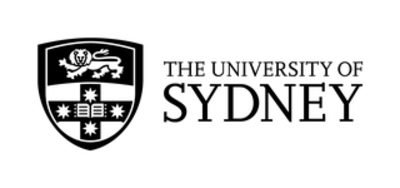- Home
Edition
Africa Australia Brasil Canada Canada (français) España Europe France Global Indonesia New Zealand United Kingdom United States Edition:
Global
Edition:
Global
- Africa
- Australia
- Brasil
- Canada
- Canada (français)
- España
- Europe
- France
- Indonesia
- New Zealand
- United Kingdom
- United States
 Academic rigour, journalistic flair
A stranger’s face? The unresolved questions of face transplantation 20 years on
Published: November 27, 2025 6.22pm GMT
Fay Bound-Alberti, King's College London
Academic rigour, journalistic flair
A stranger’s face? The unresolved questions of face transplantation 20 years on
Published: November 27, 2025 6.22pm GMT
Fay Bound-Alberti, King's College London
Author
-
 Fay Bound-Alberti
Fay Bound-Alberti
Professor in Modern History and UKRI Future Leaders Fellow, King's College London
Disclosure statement
Fay Bound-Alberti receives funding from a UKRI Future Leaders Fellowship
Partners
King's College London provides funding as a member of The Conversation UK.
View all partners
DOI
https://doi.org/10.64628/AB.nyj5h97mj
 Isabelle Dinoire, the woman who received the world’s first partial face transplant with a new nose, chin and mouth, in an operation on Nov. 27, 2005, addresses reporters on February 6, 2006, during her first press conference since the transplant.
Associated Press
https://theconversation.com/a-strangers-face-the-unresolved-questions-of-face-transplantation-20-years-on-270698
https://theconversation.com/a-strangers-face-the-unresolved-questions-of-face-transplantation-20-years-on-270698
Link copied
Share article
Isabelle Dinoire, the woman who received the world’s first partial face transplant with a new nose, chin and mouth, in an operation on Nov. 27, 2005, addresses reporters on February 6, 2006, during her first press conference since the transplant.
Associated Press
https://theconversation.com/a-strangers-face-the-unresolved-questions-of-face-transplantation-20-years-on-270698
https://theconversation.com/a-strangers-face-the-unresolved-questions-of-face-transplantation-20-years-on-270698
Link copied
Share article
Share article
Copy link Email Bluesky Facebook WhatsApp Messenger LinkedIn X (Twitter)Print article
When he saw the newspaper headlines in 2002, James Partridge was furious. Severely burned in a fire at 18, he spent his life advocating for people with “visible difference” through charities like Changing Faces and Face Equality International. Yet he found himself used as tabloid fodder in discussions about face transplants: how much better might James look with one?
The question emerged during a wave of publicity surrounding the UK’s bid to undertake the world’s first face transplant. Plastic surgeon Peter Butler and his team at the Royal Free Hospital in north London argued they were ready, claiming that nothing could match a face transplant for restoring appearance and function after severe injury.
The debate had been building for decades. The first successful kidney transplant in 1954 showed that replacing organs was possible. Since then, surgeons have transplanted hearts, lungs and most recently, hands. Some surgeons saw a natural progression: “a face is just like a hand”, they argued. But not everyone agreed.
James Partridge, for one, described the idea of face transplantation as ethically fraught and potentially harmful. As he argued in his commentary on the UK proposals, the procedure risked sending a message that disfigurement must be “fixed” at any cost.
The risks were already clear. Early reviews noted the potential for graft rejection, life-threatening infections, cancers and other complications linked to lifelong immunosuppressants. Yet the UK media were enthralled, especially after reports suggested the Royal Free team had identified a 14-year-old burns survivor as a potential first patient.
Partridge stepped in. He persuaded Sir Peter Morris, then President of the Royal College of Surgeons (RCS), to convene an expert working party. The resulting RCS report advised against proceeding at that stage. The psychological implications of giving someone a new face were unknown, making fully informed consent impossible. And what would it mean for others living with facial differences, if the surgical message implied their faces were not good enough?
Then everything changed. On November 27 2005, a French team led by Bernard Devauchelle and Jean-Michel Dubernard carried out the world’s first partial face transplant. The recipient was Isabelle Dinoire, a 38-year-old woman mauled by her pet Labrador after taking an overdose. When she woke on her sofa and tried to smoke, she couldn’t. In the bathroom mirror, she discovered the dog had chewed off part of her face.
At a press conference a few months later, Dinoire drank from a cup with new lips, spoke quietly, and expressed gratitude to surgeons and the donor.
Dinoire’s story became a global media spectacle.
In 2006, the RCS shifted position. Recognising that face transplants were now a surgical reality, it suggested they could proceed – but only with extreme caution. By that time, however, the UK programme had lost momentum, while centres in China, the US and elsewhere moved ahead.
Two decades on, only around 50 face transplants have been performed worldwide. Some patients have required re-transplantation after graft failure, but long-term survival data remains limited.
A face, it turns out, is not like a hand. Failed hand grafts can be removed; a rejected face leaves few good options. And immunosuppressants still carry significant risks.
Dinoire’s experience also underscores the psychological toll. She struggled with depression and intense media scrutiny, describing herself in one interview as feeling like a “circus animal”.
These are not the kinds of issues kidney or liver recipients usually face. A face is visible, social and symbolic. We meet the world with it; we recognise ourselves in it. Questions of identity, belonging and self-recognition sit at the centre of face transplantation.
James Partridge understood this. In his 2015 reflection on Dinoire’s operation, he praised her for taking what he called “a leap into the dark”. But he also warned that innovation must not outrun psychological support or a deeper understanding of what faces mean to people who live with visible difference.
At the same time, wider cultural pressures have only intensified. Social media has been linked with rising appearance anxiety among young people. Cosmetic surgery rates have climbed in recent years, and research also shows high rates of suicide and thoughts of suicide among people with body dysmorphic disorder, when perceived flaws in appearance become overwhelming. For this reason, surgeons often describe face transplants as “life-enhancing” rather than “life-saving”.
Understanding how and why faces matter – how they ground identity, relationships and social life – is far more complex than any single operation can capture. In my forthcoming book, I explore how faces act as a foundational marker of identity.
Twenty years after Isabelle Dinoire’s transplant, the world is still learning what it means to give someone a stranger’s face. The surgery itself is possible. The long-term consequences – medical, psychological and cultural – remain deeply uncertain.
- Health
- Medical humanities
- Medical history
- Face transplant
- Educate me
Events
Jobs
-
 Senior Lecturer, Human Computer Interaction
Senior Lecturer, Human Computer Interaction
-
University Lecturer in Early Childhood Education
-
 Case Specialist, Student Information and Regulatory Reporting
Case Specialist, Student Information and Regulatory Reporting
-
 Lecturer in Paramedicine
Lecturer in Paramedicine
-
 Associate Lecturer, Social Work
Associate Lecturer, Social Work
- Editorial Policies
- Community standards
- Republishing guidelines
- Analytics
- Our feeds
- Get newsletter
- Who we are
- Our charter
- Our team
- Partners and funders
- Resource for media
- Contact us
-
-
-
-
Copyright © 2010–2025, The Conversation

 Senior Lecturer, Human Computer Interaction
Senior Lecturer, Human Computer Interaction
 Case Specialist, Student Information and Regulatory Reporting
Case Specialist, Student Information and Regulatory Reporting
 Lecturer in Paramedicine
Lecturer in Paramedicine
 Associate Lecturer, Social Work
Associate Lecturer, Social Work


